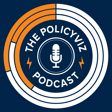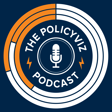
Engage, Elevate, Communicate: Davina Stanley on Crafting Clear Business Messages
In this episode of the PolicyViz Podcast, I chat with communication expert Davina Stanley about the power of clear and structured messaging in business communication. Davina shares insights from her books Engage and Elevate, discussing how leaders and teams can improve their communication efficiency through message mapping. She explains how a well-structured message can reduce back-and-forth revisions, build trust, and lead to faster decision-making. Drawing from her diverse career—from teaching kindergarten in Australia to working at McKinsey—Davina emphasizes the importance of outlining, visual hierarchy, and strategic thinking in crafting compelling business messages. Whether it's an email, a presentation, or a major proposal, she reveals how clarity in communication can transform workplace productivity and leadership effectiveness.
Keywords: business communication, message mapping, clarity, leadership, structured messaging, workplace productivity, presentations, effective writing, trust in communication, decision-making, corporate communication, professional development, consulting, strategic messaging
Subscribe to the PolicyViz Podcast wherever you get your podcasts.
Become a patron of the PolicyViz Podcast for as little as a buck a month
Check out Davina’ Clarity First Program
Follow me on Instagram, LinkedIn, Substack, Twitter, Website, YouTube
Email: jon@policyviz.com

